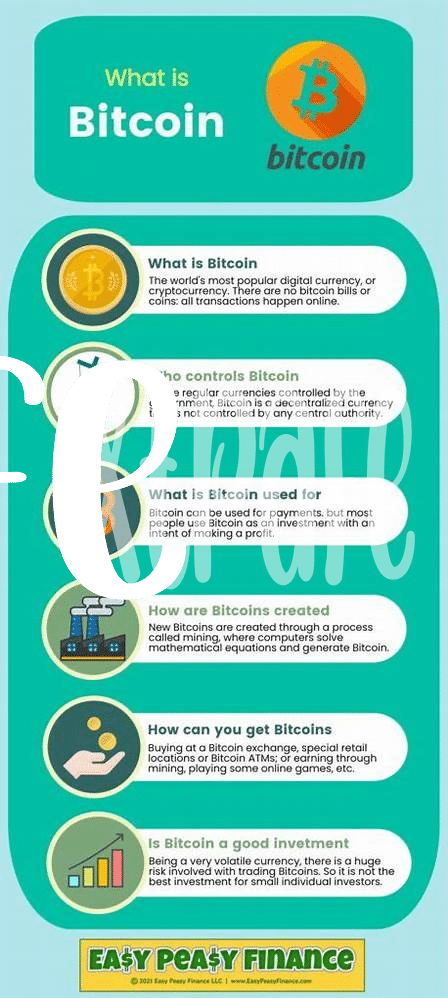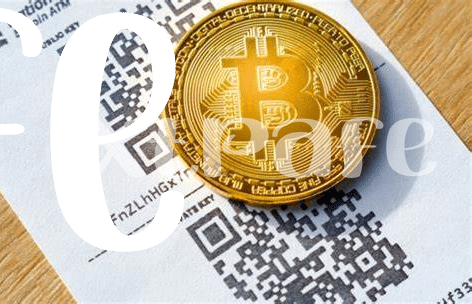Understanding Bitcoin Basics for Beginners 🌱

Imagine stepping into a world where sending money across the globe is as easy as sending a text message. That’s what Bitcoin, a type of digital currency, offers. Unlike traditional money, Bitcoin operates on a technology called blockchain, a secure, online ledger that records transactions across multiple computers. This means that transactions are not only secure but also transparent and fast. Setting up to use Bitcoin might sound complex, but it’s pretty straightforward. Firstly, you’ll need a digital wallet, sort of like an online bank account for your Bitcoin. There’s no need for a physical branch visit; this can be done with a few clicks. Think of Bitcoin as virtual coins that you can send or receive through the internet. There’s a tiny twist, though – Bitcoin’s value can swing up or down, so a bit of homework on its workings can go a long way. Here’s a simple table to break it down:
| Term | Explanation |
|---|---|
| Bitcoin | Digital currency used for secure, online transactions. |
| Blockchain | A digital ledger recording all Bitcoin transactions. |
| Digital Wallet | An online account for storing and managing your Bitcoin. |
With these key elements, you’re stepping into a new era of sending money — securely, quickly, and globally.
Setting up Your Secure Bitcoin Wallet 🔐
Imagine having a digital piggy bank where you can store your money safely and send it across the world in minutes. That’s what setting up a Bitcoin wallet can offer you. A Bitcoin wallet keeps your digital coins secure, akin to how a regular wallet holds your cash. But instead of leather or fabric, this wallet is a piece of software that lives on your computer or smartphone. To start, choose a wallet type that best suits your needs: a mobile wallet for everyday transactions or a hardware wallet for top-notch security for your savings. It’s like deciding between a daily-use handbag and a safe in your house.
To ensure you’re setting up your wallet as securely as possible, it’s vital to follow a few key steps. First, pick a reputable wallet provider by researching and reading reviews. Then, protect your wallet with a strong password, something like a secret recipe that only you know. Always remember to keep a backup of your wallet’s private key — think of this as a master key that can unlock your funds if you ever get locked out. And for an extra layer of security, consider using two-factor authentication (2FA), which adds an additional step to verify it’s really you accessing your funds. Setting up your Bitcoin wallet correctly from the get-go gives you a secure base to send international remittances safely and efficiently. For those interested in diving deeper into how market trends influence Bitcoin’s use in remittances, a thorough exploration is available at https://wikicrypto.news/the-future-of-bitcoin-understanding-volatility-and-investment-potential, offering valuable insights into navigating the volatile yet potent investment landscape of Bitcoin.
Evaluating Risks and Benefits of Bitcoin Transfers 📊

When considering using Bitcoin for sending money across borders, it’s like having a digital wallet that isn’t tied to any one country. This can make things quicker and sometimes cheaper than traditional banks or money sending services, which can be great for both you and the person receiving the money. However, it’s important to note that bitcoin’s value can go up and down quite a bit, meaning the amount of money you send today could be worth more or less by the time it reaches the recipient. 📈📉
On the flip side, using Bitcoin for international remittances allows you to bypass many of the fees and delays associated with conventional bank transfers. This means you could send money at any time of day, without having to wait for banks to open or process the transaction. Yet, it’s essential to remember that all transactions are final. There’s no “undo” button if you send to the wrong address or fall victim to a scam. This calls for a careful understanding and handling of your digital money, making sure to double-check details and use reputable platforms for your peace of mind. 🔍💡
Choosing the Right Platform for Your Remittance 💻

When embarking on the journey of sending money overseas through Bitcoin, selecting where to conduct your transactions is crucial. Imagine you’re choosing a new home for your funds; it’s not just about the attractive facade but what lies within – security, ease of use, and the assurance it will reach its destination safely. Platforms vary greatly, from those that are as easy to use as your favorite social media site to those that offer layers of security tighter than a drum. A good starting point is understanding what each platform offers and aligning that with your needs. Do you value simplicity or are you willing to navigate a bit of complexity for added security? Also, consider the fees involved because, just like with traditional money transfer services, costs can vary widely. For a deeper dive into making informed choices in the digital currency space, explore bitcoin trading strategies for beginners. Ensuring your platform of choice ticks the right boxes for your specific needs will not only streamline the process but also safeguard your peace of mind. 🌍💼💡
Protecting Your Remittance from Fraud and Scams 🛡️
When diving into the world of Bitcoin for sending money across borders, it’s essential to keep your digital coins safe from the sneaky hands of fraudsters and con artists. Imagine setting up a virtual safety net that keeps your hard-earned money secure. It’s not as daunting as it sounds! First off, always double-check the legitimacy of the website or app you’re using for your transactions. If it looks as dodgy as a back alley deal, steer clear. Next, be like a secret agent and protect your personal information. Sharing too much online is like leaving your front door wide open for thieves. And remember, in the digital world, if something seems too good to be true, it probably is. Before you click ‘send’, pause and think, “Is this safe?” Lastly, keep your Bitcoin wallet’s key – think of it as a super-secret password – under wraps. Only you should have access to this. Following these steps can make your Bitcoin remittance as secure as a vault.
Here’s a quick table to help you remember the key points:
| Step | Action |
|---|---|
| 1 | Verify the platform’s legitimacy 🕵️♂️ |
| 2 | Guard your personal info 🛡️ |
| 3 | Be skeptical of too-good-to-be-true offers 🧐 |
| 4 | Keep your wallet key secret 🔐 |
Keeping Track of Remittance and Tax Implications 📝

When it comes to sending money across borders with Bitcoin, it’s crucial not only to send it safely but also to understand what happens after you click “send.” 📝 Every time you make a remittance, keeping a detailed record can save you a lot of headaches. This means jotting down how much you sent, when you sent it, and the current value of Bitcoin at that time. Why? Because the world of Bitcoin can be a bit like a rollercoaster, with its value going up and down. For those just dipping their toes in, understanding this can be as crucial as knowing how to send Bitcoin itself. Speaking of which, it’s a good idea to get familiar with bitcoin wallet types for beginners, particularly because picking the right one can impact your remittance experience. 🌱🔐 And here’s where it gets a bit more technical but bear with me – taxes. Depending on where you live, you might need to report these transactions to your local tax authority. The rules can vary widely, so it’s worth doing a bit of homework or talking to a tax professional to make sure you’re not accidentally skipping any steps. By staying organized and informed, you’re not just protecting your money; you’re also making sure it’s working for you in the best way possible.
